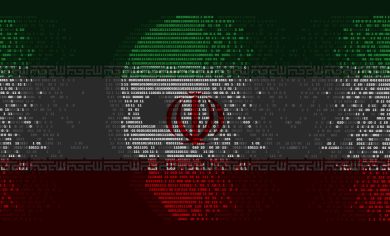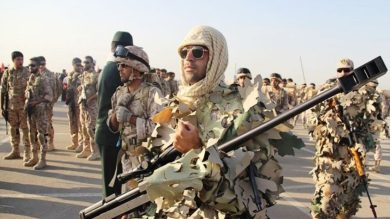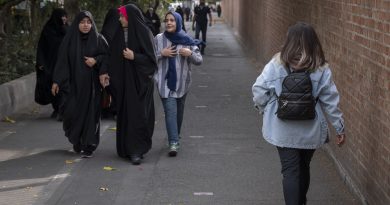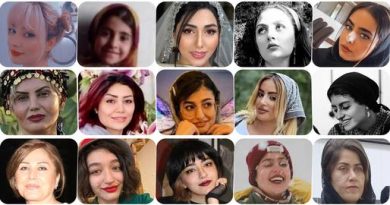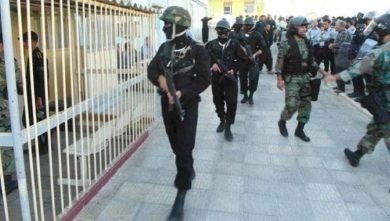The Islamic Revolutionary Guard Corps (IRGC) is not just a domestic security force. It is the architect of an aggressive foreign policy that relies on a vast, opaque, and deadly network of proxy militias and armed groups. These proxies serve as the Islamic Republic of Iran’s tools of asymmetrical warfare, expanding Tehran’s regional influence while providing the regime with plausible deniability for terrorism, destabilization, and human rights violations.
From Lebanon and Syria to Iraq, Yemen, Gaza, and beyond, the IRGC’s reach is global—and its proxies form a web of shadow armies that threaten peace, sovereignty, and civilian lives across the Middle East.
This article explores how the IRGC built, funds, trains, and commands its transnational proxy network—and why confronting it is essential to ending state-sponsored terror.
1. What Is a Proxy Network?
A proxy network is a system of armed groups and militias that act on behalf of or in alignment with a foreign state’s interests. In the IRGC’s case, proxies allow Iran to:
• Wage war without declaring war
• Influence foreign governments and conflicts
• Circumvent international sanctions and arms restrictions
• Create buffer zones of chaos around perceived enemies
• Deny responsibility for terrorism and war crimes
Proxies provide Iran what its conventional military cannot: low-cost, high-impact regional power projection.
2. The IRGC’s Foreign Legion: The Quds Force
At the heart of this proxy empire is the Quds Force, the IRGC’s elite extraterritorial operations unit.
Roles and Missions:
• Train and equip non-state militias
• Provide financial, strategic, and political support
• Coordinate attacks on U.S., Israeli, Saudi, and regional targets
• Spread Shiite revolutionary ideology
The Quds Force operates in coordination with Iran’s intelligence services, embassies, and IRGC-affiliated charities, often under diplomatic cover.
3. Lebanon: Hezbollah, the IRGC’s Prototype Proxy
Hezbollah, founded in 1982 with IRGC support, is the original and most successful model of the IRGC’s proxy warfare strategy.
Capabilities:
• 150,000+ rockets aimed at Israel
• Political dominance within Lebanon
• Global criminal and fundraising networks
• Direct combat experience in Syria and Iraq
Hezbollah acts as Iran’s southern front against Israel, with complete ideological, financial, and military dependence on Tehran.
Impact:
• Undermines Lebanon’s sovereignty
• Provokes regular conflict with Israel
• Harasses journalists, opposition figures, and civil society in Lebanon
4. Syria: Saving Assad’s Regime
Since 2011, the IRGC has deployed tens of thousands of fighters to defend Bashar al-Assad, turning Syria into a hub of Iranian influence.
How the IRGC Operates in Syria:
• Deploys Quds Force officers and Shia militias from Iraq, Afghanistan, and Pakistan
• Controls military bases and drone facilities
• Conducts joint operations with Hezbollah and Russian forces
• Engages in ethnic cleansing and population engineering near Damascus
Syria has become a forward operating base for IRGC arms shipments to Hezbollah and Hamas.
5. Iraq: Controlling the State from Within
In post-Saddam Iraq, the IRGC established dozens of paramilitary groups and political parties under the umbrella of the Popular Mobilization Forces (PMF).
Key Proxies:
• Kata’ib Hezbollah
• Asa’ib Ahl al-Haq
• Harakat al-Nujaba
These groups:
• Attack U.S. troops and Iraqi reformists
• Control checkpoints, ports, and revenue streams
• Intimidate and assassinate journalists and activists
• Undermine Iraqi sovereignty and electoral independence
The IRGC’s goal is to turn Iraq into a client state, not a neighbor.
6. Yemen: The Houthi War Machine
In Yemen, the IRGC backs the Houthi movement, turning it from a local insurgency into a regional threat.
IRGC Involvement:
• Arms the Houthis with ballistic missiles, drones, and naval mines
• Smuggles weapons through Oman and the Red Sea
• Trains fighters via Hezbollah and Quds Force advisors
The Houthis have:
• Launched attacks on Saudi oil facilities and UAE airports
• Plunged Yemen into a humanitarian catastrophe
• Blocked peace efforts to maintain IRGC leverage in the Gulf
7. Gaza: Arming Hamas and Palestinian Islamic Jihad
The IRGC supports both Hamas and Palestinian Islamic Jihad (PIJ), using Gaza as a strategic pressure point against Israel.
Forms of Support:
• Missile technology and manufacturing
• Cyber and strategic coordination
• Financial aid through Hezbollah or Quds Force channels
Hamas and PIJ have launched thousands of rockets into Israel, often with IRGC guidance or pre-approval.
8. Afghanistan and Pakistan: Recruiting Foreign Fighters
The IRGC has recruited thousands of Afghan and Pakistani Shia fighters into units like:
• Liwa Fatemiyoun (Afghans)
• Liwa Zainebiyoun (Pakistanis)
These groups fought in Syria and are now used as transnational militias. The IRGC:
• Pays salaries and offers citizenship to families
• Trains fighters in camps in Iran and Syria
• Prepares them for future deployment in new regional conflicts
9. Bahrain, Saudi Arabia, and the Gulf: Covert Insurgency
The IRGC has long sought to destabilize the Gulf monarchies, especially Bahrain and Saudi Arabia.
Tactics:
• Trains Bahraini militants in Iran and Iraq
• Smuggles explosives and weapons into Shia-majority areas
• Supports cyberattacks and social media agitation
• Targets oil infrastructure (e.g., the 2019 Aramco drone attack)
The goal is to stretch Gulf security forces thin and promote domestic unrest.
10. Africa and Latin America: Global Proxies and Influence
IRGC and Hezbollah operatives have been linked to:
• Money laundering in West Africa
• Weapons deals in Sudan and Libya
• Training camps in Venezuela
• Narcotrafficking in the Tri-Border Area (Brazil, Paraguay, Argentina)
• The 1994 AMIA bombing in Argentina, which killed 85
These “distant fronts” serve Iran’s strategy of strategic depth and global disruption.
11. Logistics and Weapons Pipeline
The IRGC maintains a weapons pipeline that runs from Iran through Iraq and Syria to Lebanon and Gaza.
Key Components:
• Drone and missile factories in Syria
• Underground weapons depots
• Smuggling through diplomatic planes and aid convoys
• Sea routes through the Red Sea and Mediterranean
These routes are defended by air defenses and guarded by proxy militias.
12. Denial, Deception, and Plausible Deniability
Iran claims it has no presence in foreign countries. The IRGC exploits:
• Civilian disguises for operatives
• Use of “advisors” instead of combat troops
• False flags and media manipulation
• Proxies to absorb blame for terrorism
This makes attribution difficult and accountability elusive.
13. Consequences of the IRGC’s Proxy Strategy
For the Region:
• Endless wars and sectarian violence
• Collapse of sovereign institutions in Iraq, Syria, and Lebanon
• Rise of extremist militias with no accountability
For Civilians:
• Mass displacement and refugee crises
• Starvation in Yemen, torture in Syria, executions in Iraq
• Arbitrary arrests and political assassinations
For the World:
• Attacks on energy markets and shipping routes
• Destabilization of key U.S. and EU allies
• Expansion of Iranian influence in fragile states
14. Why the World Hasn’t Stopped It
Despite ample evidence, international response has been slow or fragmented.
Challenges:
• IRGC’s use of local actors for deniability
• Political divisions over Iran nuclear deal (JCPOA)
• Fear of regional escalation
• Economic interests in avoiding confrontation
Without a unified global approach, the IRGC’s proxy empire continues to grow.
15. What Must Be Done
A. Full Terrorist Designation
• Designate the entire IRGC, not just the Quds Force.
• Label Hezbollah, PIJ, and Houthis as IRGC proxies in official policy.
B. Disrupt Funding
• Sanction IRGC-linked banks, charities, and crypto networks.
• Pressure Gulf and Latin American countries to shut down money laundering hubs.
C. Expose the Network
• Use open-source intelligence and survivor testimony to map and publicize links.
• Highlight local opposition movements resisting IRGC control.
D. Support Victims and Civil Society
• Fund independent media and NGOs in conflict zones.
• Support documentation and prosecution of IRGC-linked war crimes.
Conclusion: From Tehran to Tel Aviv and Beyond
The IRGC’s proxy network is not just a feature of regional politics—it’s a global threat strategy. Built on death, deception, and destabilization, this network has become Tehran’s most powerful weapon.
To contain it, the international community must act with resolve and unity. Because wherever the IRGC extends its influence, human lives are destroyed and peace is undermined.
Join Our Newsletter!
Stay informed with the latest updates, news, and ways to take action in the fight for justice and global security. Sign up now to get updates delivered straight to your inbox!

